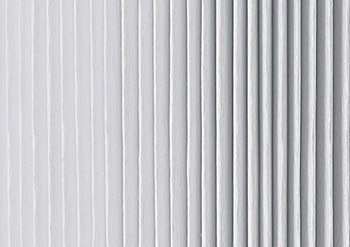
A Question Of When
Good filter media maintenance is primarily a matter of keeping them clean. Ask any service tech eating lunch in his truck, and he'll tell you to it's time to clear out the filter gunk whenever you get 10 psi above the normal operating pressure. Beyond that 10 psi, the spaces in the filter that normally strain particles get clogged up, and the unit creates ever greater resistance to flow.
Most techs realize this is a energy drain on the system — for which the homeowner pays dearly in utility costs — as the pump strains to push water through the pipes, but it also cuts ongoing filtration by reducing the flow rate and thereby the amount of pool water that passes through the filter in the daily turnover schedule.
"You may have your pool set for an eight-hour filtration run," says Zach Hansen, technical services engineer for BioLab, a division of Chemtura Corporation, "and you might initially get one and a half to two turnovers, but as the filter gets plugged up, you start dropping down to just one, then three quarters or just a half. At that point, that water just isn't moving, so the dirt that gets in there and causes cloudy water begins to accumulate."
But it's also important not to backwash sand filters too soon. There is a mind-set in some pool owners that when it comes to cleaning, more is better, and therefore, more frequent backwashing of the filter will keep water clearer. But a minor load of dirt across the top layer in a sand filter actually helps it filter better. As that dirt coats a sand bed, it helps strain even more dirt and enables it to filter out finer material and reduce the cloudiness that results from small micron debris.
Change Is Good
A gradual increase in cloudiness and other filtration problems can also result when the sand has reached the end of its useful lifespan, typically between three to five years, but perhaps longer depending on pool use and care. It can be a difficult chore than many pool techs dread, depending on the model of filter, as the sand will likely have a hard crust on top and must be removed either by scooping, vacuuming or pouring through a drain port in the bottom.
Note: When refilling the sand filter, it's crucial to maintain "head space" above the sand bed. That space is intended to dissipate the turbulence of the incoming flow and produce steady, even water pressure over the sand bed. Without that head space — with uneven pressure across the sand bed — channeling will result. Water will run straight through the channel without being filtered.
"It's an important part of sand filtration which is often overlooked, particularly by homeowners," Hansen says, "who sometimes think more sand is better, but it results in poor filtration, cloudy water, and ultimately a less- desirable experience with the pool."
Cloudy water can result from other filter-related causes as well, including the precipitation of calcium due to poor water balance. Calcium is dissolved in pool water, and its state as a liquid or solid depends on water chemistry — pH, temperature, mineral concentration, etc.
"A lot of people don't realize that if you have cloudy water due to a water balance issue, a lot of times it's due to that calcium carbonate precipitate, which is then removed at the filter. And you can try to backwash that calcium carbonate out of the filter, but often times you get calcification of the filter, which will clog it up and cause a loss of efficiency," Hansen says.
Normal backwashing techniques are not adequate for this type of problem. An acidic cleaner is needed, which soaks into calcium precipitate in the sand bed and re-dissolves it so it can be washed away.
"You can run into this problem to some extent with a cartridge filter, too," Hansen adds, "but when you hose off the cartridge filter, because the calcium precipitate is not impregnated into a sand bed, it can rinse off when you hose it down. Acidic filter cleaners have been repositioned and remarketed so they come with a spray trigger, so you can use them easily on cartridge filters. Typically a professional will spray the chemical cleaner on the cartridge filter after hosing it off, that spray will re-dissolve any residual calcium left on the fabric, and then they'll just rinse that off."
The Crusty And The Oily
Acid cleaners can tackle crusty calcium, but for oily substances that block filtration but refuse to rinse out, a basic (as in high pH) cleaner is the answer. Pool bathers are inevitably covered in oils of various types, from coconut to natural skin oil, and as oil and water don't mix, these substances are reluctant to join rinse water in a backwash or cartridge hose-down. So they, too, need to be dissolved with a chemical cleaner before they can be washed away.
Hansen recommends using both types of cleaners in the course of a season, as part of an overall regimen focused on keeping the filtration system operating at peak efficiency. "Maybe once or twice a season, use both on a filter bed," he says. "Start with the non-acidic cleaner first to rinse out the oils, and then come back with the acidic cleaner to get the minerals and calcium in the depths of the filter bed."
Comments or thoughts on this article? Please e-mail [email protected].








































